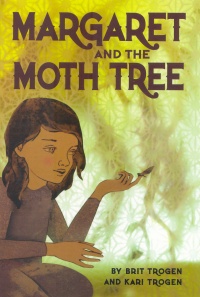| ________________
CM . . . . Volume XVIII Number 35 . . . . May 11, 2012
excerpt:
Margaret Grey is a little girl who is passed from home to home after her parents pass away. She is eventually taken by the Concerned Ladies’ Club to a nearby orphanage which is run by the conniving Miss Switch. When Margaret arrives, she cannot believe her eyes. The children are laughing, playing, and having fun, and delicious food is abundant. Sadly, things are too good to be true, and, as soon as the ladies from the Concerned Ladies’ Club leave, the home is transformed into a gloomy and frightful place where the children are divided into the beautiful “pets” and the less aesthetic “dregs,” as assigned by Miss Switch. The money the orphanage receives goes straight to Miss Switch who uses it all on herself and only puts on the guise of a welcoming and comfortable orphanage whenever visitors come by. When children try to rebel or call the police, it is their young word against the authoritative Miss Switch, and, after unsuccessful attempts, the children are subjected to Miss Switch’s horrible punishments, such as being made to stand in the middle of a field during a lightning storm, a practice which serves to deter future rebellions.After a failed attempt at freeing herself and the other orphans, Margaret is made to sleep in the hallway, eat meals alone outside on the porch, and complete her chores in solitude, as Miss Switch forbids the other orphans from talking to her. One day while outside pulling weeds, Margaret begins to hear voices coming from beyond the garden. She discovers the voices to be coming from moths that live in a tree in a clearing beyond the garden. Margaret makes friends with the moths, and, with their help, she begins to play tricks on Miss Switch and eventually to overtake the evil headmistress and reveal her true colours to the Concerned Ladies’ Club and the police. An earnest story authored by two sisters, Margaret and the Moth Tree is a fair mix of fantasy, an orphan story, and didactic tale. The story is told in three parts, and the writers have used flashback chapters to tell the back stories and fill in character profiles. Unfortunately, these flashbacks seem quite choppy and disrupt the flow of the story. That said, the episodic writing makes this a good story for reading aloud with a child and for sharing the story over several nights. Likewise, life lessons are sprinkled throughout the book, and some parents may like to share them with their children, but are, at times, these life lessons are too explicitly didactic: Margaret is likeable, and readers may feel sympathetic towards her and be rooting for her to escape and reveal Miss Switch’s true colours. On the other hand, the story is quite gloomy and may be too scary for younger readers. For example, the punishments that Miss Switch administers are quite horrific -- i.e., forcing a child to stand in the middle of a field during a lightning storm. The fantastical moths do not enter the story until part three of the book which makes their appearance and storyline less believable and almost too convenient, though readers will likely be waiting for their appearance after reading the title of the book. On the other hand, this part of the story provides whimsy and may prove enchanting for young readers. Recommended. Courtney Novotny has recently completed her MLIS from the School of Library, Archival, and Information Studies at UBC.
To comment
on this title or this review, send mail to cm@umanitoba.ca.
Copyright © the Manitoba Library Association. Reproduction for personal
use is permitted only if this copyright notice is maintained. Any
other reproduction is prohibited without permission.
NEXT REVIEW |
TABLE OF CONTENTS FOR THIS ISSUE
- May 11, 2012.
AUTHORS |
TITLES |
MEDIA REVIEWS |
PROFILES |
BACK ISSUES |
SEARCH |
CMARCHIVE |
HOME |
||||||
